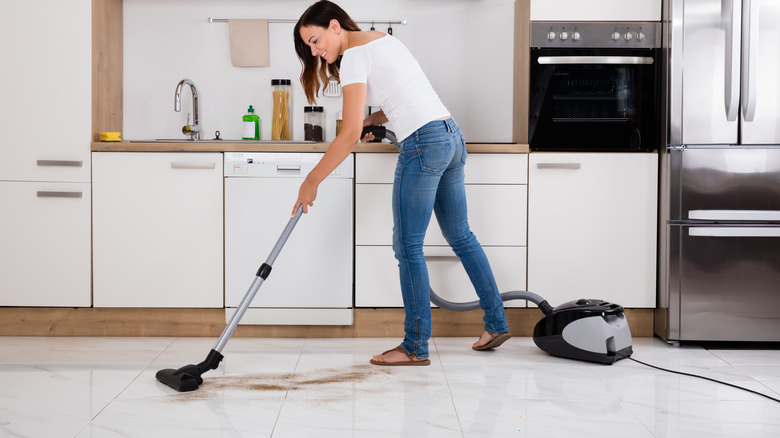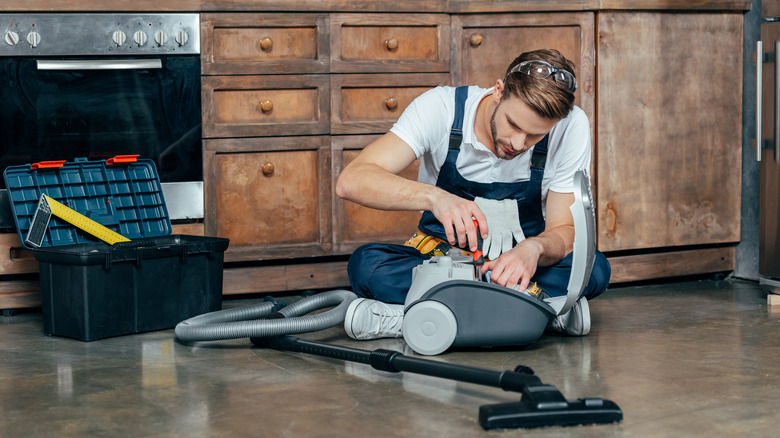What Happens If You Vacuum Up Coffee Grounds
Forget the blades, if Edward Scissorhands could swap his clippers for vacuum cleaners, he'd be the envy of every multitasking homeowner on the planet. Of course, you don't have to be juggling life with a Cheerios-spilling toddler or a super-shedding fur baby to appreciate the convenience of having the ultimate mess sucker-upper at your fingertips. Vacuums are an essential household tool that can erase some of the worst catastrophes. However, something as routine as vacuuming up spilled coffee grounds has the potential to put your beloved appliance out to pasture as the moist mess can clog parts, kill the motor, and breed mold.
Many homeowners figure if they can use a vacuum to clean everything from blinds to the bathroom, the electric device should easily swallow a compact pile of coffee grounds. After all, the dark-colored needle-like granules mixed with pulverized beans and grainy bits seem like ideal candidates for a vacuum. Unfortunately, whether they're splattered on the floor or sitting idle in the coffee maker, it's critical that you resist vacuuming up spent coffee grounds. Instead, dry coffee dregs can be swept into a dustpan with a broom or hand brush and deposited directly into the trash.
Avoid harming your vacuum and your health
Having a vacuum cleaner inhale coffee debris takes much less time and energy than sweeping or wiping, however, those extra-fine remains can get sucked into the motor and burn it out. Even if your vacuum is equipped with a well-designed filter, habitual ingestion of sandy coffee grounds can cause clogs, decrease efficiency, and allow fine particles to escape back into the air. What's more, if you continue to use your vacuum with congested air filters, not only will you experience a loss of suction, but over time your machine can inadvertently become a source of air pollution rather than a method to eliminate it.
Likewise, sucking up wet coffee grounds can turn your vacuum into a breeding ground for mold and mildew. Vacuuming up damp items is never a good idea as doing so can coat the inside of the machine's inner components and remain trapped there rather than making it all the way into the bag, canister, or dirt cup. This dark, humid environment is ideal for organic matter like coffee grounds to spawn mold. As the fungus matures and builds up on the inside of the vacuum, it forces the motor to work harder than necessary, thus shortening its life. However, more alarming is the impact mold development can have on the health of your household. If a mold-infested vacuum continues to be used to clean, it can spread spores to other areas where they can settle and propagate new clusters.

